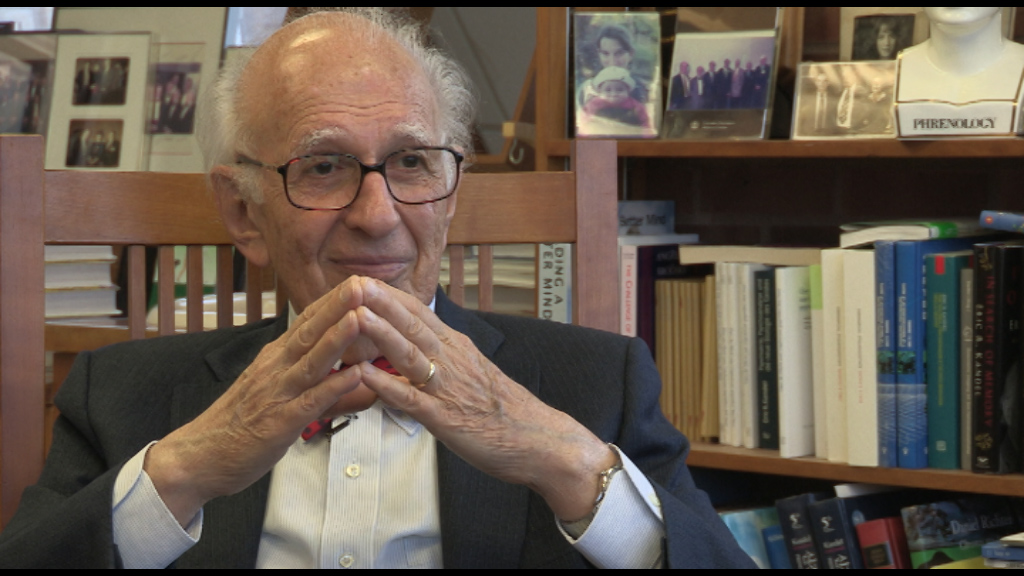NEXT STORY

Brains, bones and age-related memory loss
RELATED STORIES

NEXT STORY

Brains, bones and age-related memory loss
RELATED STORIES



We've recently found that as in Aplysia, there is in the hippocampus, a homolog of the cytoplasmic polyadenylation binding protein – CPEB. There are four homologs which we creatively called one, two, three and four, and CPEB3 has a domain that has these glutamine rich residues, a prion-like domain. And it acts exactly like a prion. You put it into yeast, it forms aggregates. In the basal states, it's soluble, and it's a repressor of translation. With activity, it becomes aggregated, translocates to the ribosomes, and functions as a regulator of translation. And dopamine stimulates the aggregation, and initiates the protein synthesis. So it really fits in very much like serotonin did in Aplysia. So this was really very nice progress, and it encouraged us to begin to think a little bit more broadly about what can we do with this information.
Well one thing we could do is to try to explore disorders of memory storage. And we looked at a number of these. We began by looking at age-related memory loss. It had been thought for some time that there may be two independent processes in the brain,– Alzheimer's disease, and age-related memory loss. Now at first this was not appreciated, it part because until 1900 people didn't live very long. They lived to be 50 years old. So when I was in medical school in the 1950s, we were seeing, you know, people pretty much of that generation coming along, and Alzheimer's disease was not much discussed in medical school. But now, when people are living… men live to be 78, women live to be 82, you see a significant amount of age-related memory loss.
But people are not simply living longer, they're living better. So one sees in parallel with Alzheimer's disease, there appears to be a more benign process in which there is significant forgetting, but it doesn't seem to progress to other areas of knowledge, and it seems to be more restricted than Alzheimer's disease. So it doesn't interfere with speech, etc, etc or grammar formation and things like that. And so we thought we'd begin to explore it.
Eric Kandel (b. 1929) is an American neuropsychiatrist. He was a recipient of the 2000 Nobel Prize in Physiology or Medicine for his research on the physiological basis of memory storage in neurons. He shared the prize with Arvid Carlsson and Paul Greengard. Kandel, who had studied psychoanalysis, wanted to understand how memory works. His mentor, Harry Grundfest, said, 'If you want to understand the brain you're going to have to take a reductionist approach, one cell at a time.' Kandel then studied the neural system of the sea slug Aplysia californica, which has large nerve cells amenable to experimental manipulation and is a member of the simplest group of animals known to be capable of learning. Kandel is a professor of biochemistry and biophysics at the College of Physicians and Surgeons at Columbia University. He is also Senior Investigator in the Howard Hughes Medical Institute. He was the founding director of the Center for Neurobiology and Behavior, which is now the Department of Neuroscience at Columbia University. Kandel's popularized account chronicling his life and research, 'In Search of Memory: The Emergence of a New Science of Mind', was awarded the 2006 Los Angeles Times Book Award for Science and Technology.
Title: CPEB and exploring age-related memory loss
Listeners: Christopher Sykes
Christopher Sykes is an independent documentary producer who has made a number of films about science and scientists for BBC TV, Channel Four, and PBS.
Tags: hippocampus, cytoplasmic polyadenylation binding protein, prion, age-related memory loss, Alzheimer’s disease
Duration: 2 minutes, 58 seconds
Date story recorded: June 2015
Date story went live: 04 May 2016